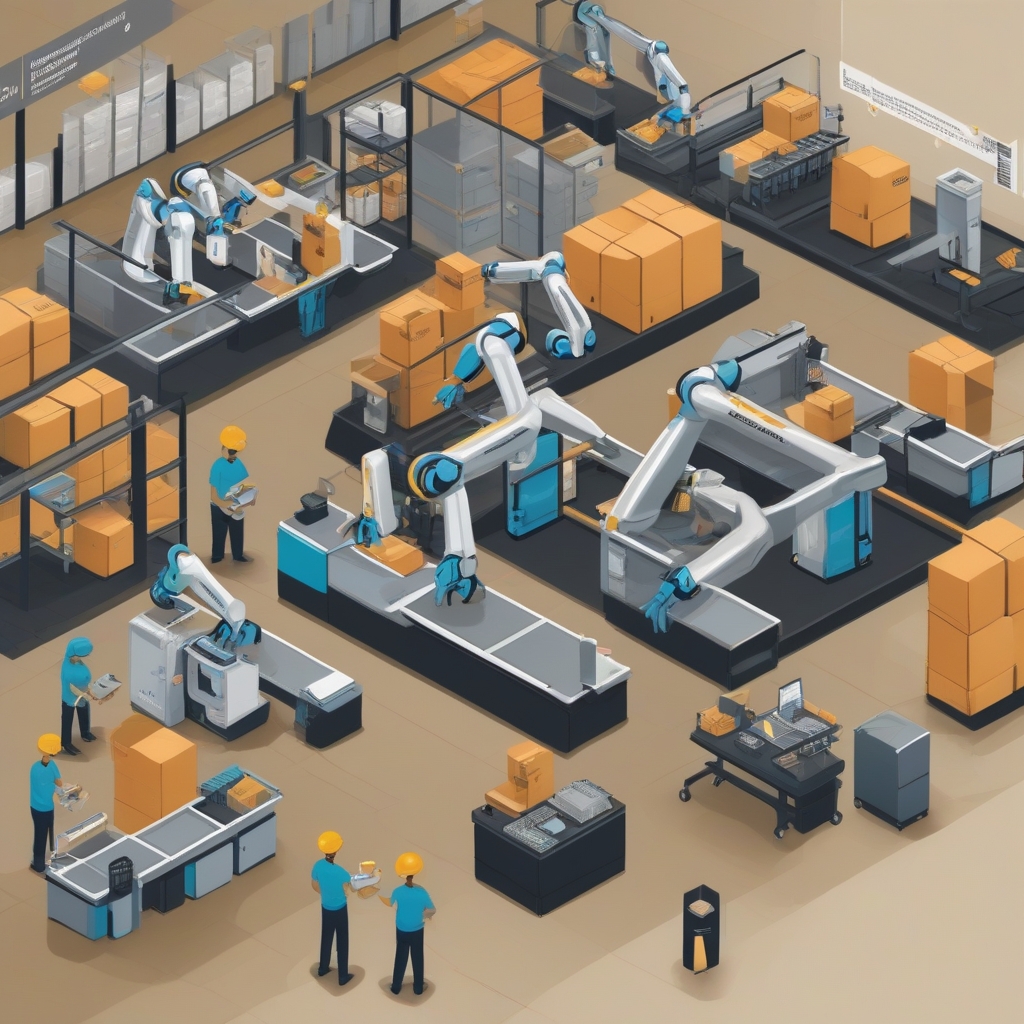Introduction
In today’s rapidly evolving tech landscape, Amazon continues to lead the charge by incorporating artificial intelligence (AI) and robotics into its operations. This seamless fusion of cutting-edge technology and human effort is not only enhancing operational efficiency but also significantly revolutionizing the worker experience. By fostering a harmonious and productive environment, Amazon is setting a new standard for the future of workplace automation.
How AI and Robotics are Transforming Amazon’s Warehouses
Amazon’s adoption of AI and robotic technologies is reshaping its warehouse operations, making them faster, smarter, and safer. Here are some of the key ways in which these innovations are revolutionizing the worker experience:
1. Improved Efficiency and Productivity
AI-powered systems and advanced robotics are streamlining a range of warehouse tasks, from sorting and moving packages to managing inventory. These technological advancements are:
- Enhancing speed and accuracy in sorting and organizing parcels.
- Reducing the time workers spend on repetitive tasks.
- Optimizing overall logistics and workflow management.
Robotic arms and AI-driven machines can handle a significant portion of the heavy lifting, allowing human workers to focus on more complex and decision-based tasks. This not only boosts productivity but also contributes to a smoother and more efficient workflow.
2. Enhanced Worker Safety
Incorporating AI and robotics in warehouse environments significantly improves safety. By taking on physically demanding and potentially hazardous tasks, robots reduce the risk of injuries among human workers. AI systems monitor and analyze operations to preemptively address safety concerns, ensuring a safer working environment.
- Lower risk of physical injuries from heavy lifting.
- Real-time monitoring and alerts to identify and mitigate hazards.
- Implementation of safety protocols based on AI-driven insights.
3. Better Job Satisfaction
Amazon’s innovative approach fosters a more satisfying work experience for employees. By reducing the monotony of repetitive tasks and providing a safer environment, workers can enjoy higher job satisfaction and morale.
- Less fatigue and stress due to reduced manual labor.
- Opportunities for skill development and technical training.
- Increased focus on tasks that require problem-solving and creativity.
4. Enhanced Collaboration between Humans and Robots
Amazon’s warehouses are a prime example of effective human-robot collaboration. Advanced algorithms and intuitive AI systems allow robots to work seamlessly alongside human employees, facilitating a cohesive and productive environment.
- Robust coordination between human and machine efforts.
- Efficient delegation of tasks based on real-time data.
- Increased productivity through teamwork between robots and humans.
The integration of AI and robotics promotes a symbiotic relationship where machines handle repetitive or dangerous tasks while humans leverage their problem-solving skills and creativity.
The Future of AI and Robotics in Amazon’s Warehouses
As technology continues to advance, the role of AI and robotics in Amazon’s operations will likely expand and evolve. Future innovations may include:
1. Autonomous Delivery Systems
AI-driven drones and autonomous vehicles could revolutionize the logistics and delivery landscape. These systems promise to:
- Reduce delivery times through optimized route planning.
- Minimize costs associated with labor and fuel consumption.
- Increase the reliability and efficiency of delivery services.
2. Predictive Maintenance and Analytics
AI-powered predictive maintenance systems can foresee and address potential equipment failures before they occur. This proactive approach would:
- Ensure equipment uptime and operational continuity.
- Reduce maintenance costs by preventing unexpected breakdowns.
- Improve the lifespan and efficiency of machinery.
3. Advanced Training and Adaptation
As AI and robotics take on more complex roles, human workers will require continuous training to stay abreast of technological advancements. Anticipated developments in this area include:
- Enhanced training programs incorporating VR and AR technologies.
- Adaptive learning systems that tailor educational content to individual needs.
- Continuous professional development opportunities to keep pace with innovation.
Conclusion
Amazon’s embrace of AI and robotics is a game-changer, not only for the company but for the entire logistics and e-commerce industry. By prioritizing efficiency, safety, and employee satisfaction, Amazon is setting a new standard for workplace automation. The harmonious integration of human workers and advanced technology forms the foundation of a modern, productive, and innovative working environment.
As we look to the future, Amazon’s ongoing technological advancements promise to redefine the worker experience further, leading the way in creating safer, more efficient, and more satisfying workplaces. The future of AI and robotics in Amazon’s warehouses holds tremendous potential, and the company remains poised to leverage these innovations to continue its leadership in the global marketplace.

Leave a Reply